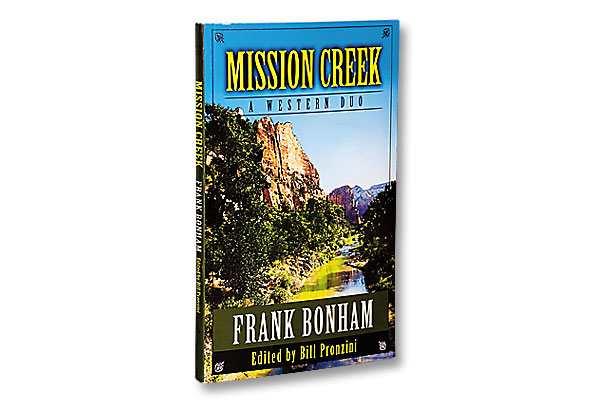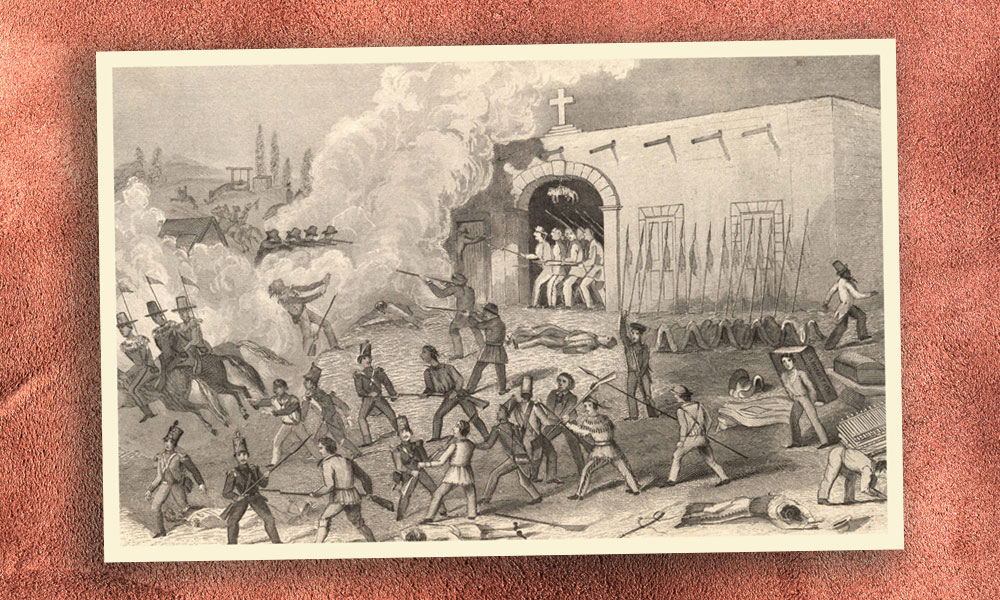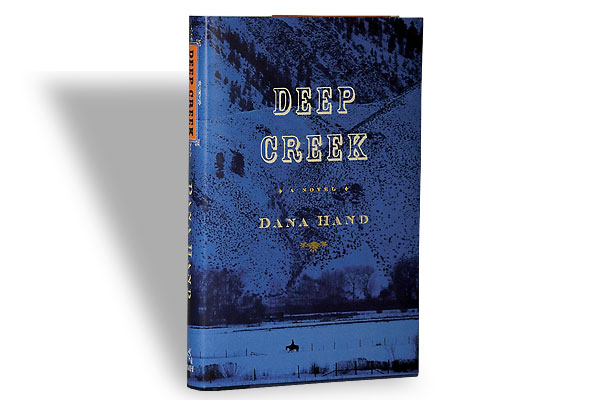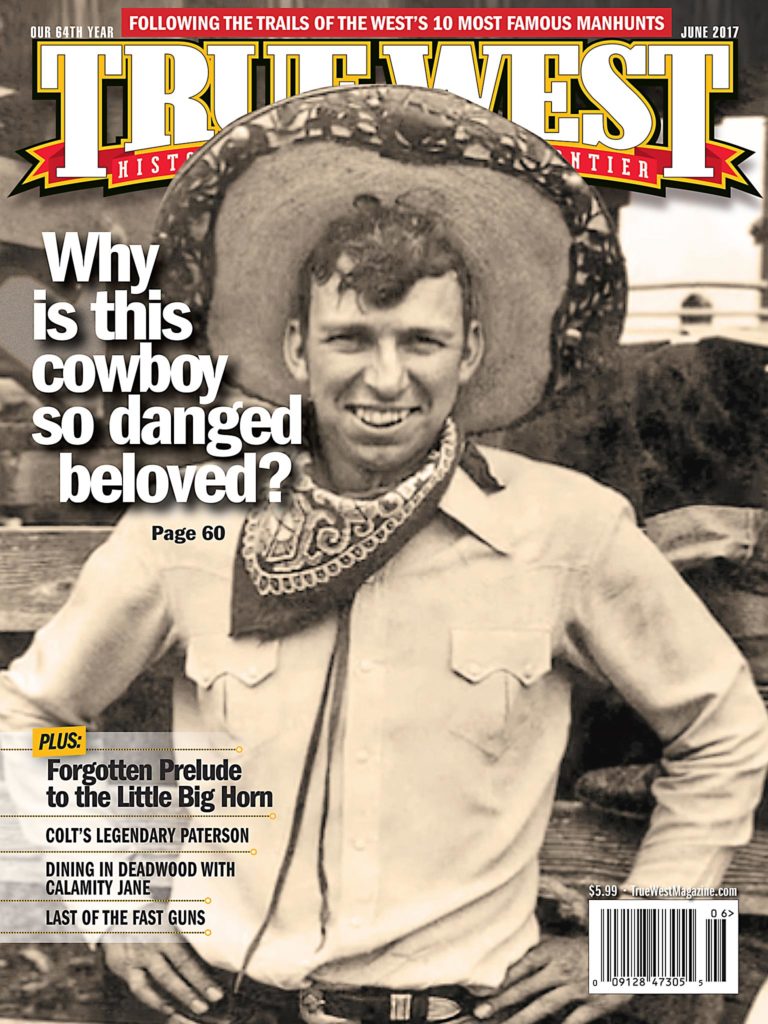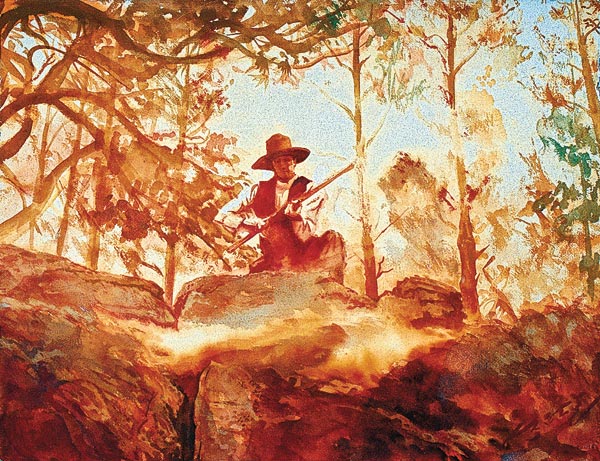
—Associated Press, July 18, 1899
– Illustrations by Bob Boze Bell –
July 16, 1899
Three suspected train robbers are in camp at their remote hide-out at Turkey Creek Canyon in New Mexico Territory.
Tipped off by a sighting (and a snitch), a seven-man posse out of Cimarron rides to the stronghold and dismounts when campfire smoke is spotted curling up through the trees.
The posse members get into position: three lawmen climb a ridge left of the camp and the other four deploy up the north side of the creek bottom. A half-dressed outlaw, Elzy Lay, comes into their view. With a canteen in his hand, Lay approaches a pool of water in the nearly dry creek bottom.
A few posse members take aim and fire (most likely Sheriff Edward Farr and Wilson “Memphis” Elliott; reports differ on whether anyone first orders the outlaw to surrender).
Shot twice, in the shoulder and back, Lay drops, as though he was hit with a club. “We’ve got one of the sons of bitches, anyway,” a posse member yells.
Lawman Elliott spots the outlaws’ horses tethered at the far end of the camp. He aims and fires, dropping one and perhaps another (see “Aftermath”).
Posse member Perfecto Cordoba spies two of the outlaws standing around a campfire near a cave. As others in the posse begin shooting, Cordoba notices one of the outlaws, Sam Ketchum, running in his direction.
“Look out! There’s one of them right at you!” Cordoba yells at Elliott, while racing to Elliott’s position. “Look out, he’ll shoot you!”
“Show me where he is at,” Elliott commands.
“I can’t see him now.”
“You ought to have shot when you did see him,” Elliott argues.
“I didn’t have time,” Cordoba replies.
Less than 40 yards from Elliott, Ketchum conceals himself behind a tree.
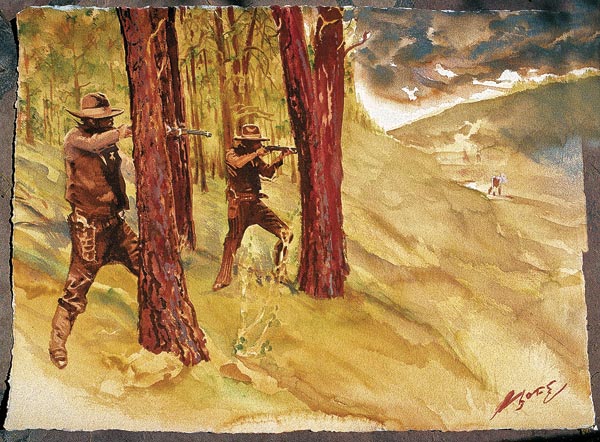
Elliott and Cordoba hear shots, but they can’t see anything. They finally see glimpses of a hatless head bobbing up and down among the trees on the outlaw side of the canyon and assume this is the bandit Cordoba saw earlier. Elliott fires several bullets up the draw, hitting nothing.
The hatless head belongs to Will Carver, who takes up a position high atop a rocky knoll that is screened with brush. He begins pouring lead across the canyon at Farr, William Reno and Frank Smith. Although Carver is nearly 200 yards away, he hits Smith in the calf of his left leg, causing the lawman to go down.
The rest of the posse members can’t locate Carver in the dense brush because he’s using smokeless powder.
Left for dead, Lay regains consciousness and starts crawling on all fours. Though bleeding, dazed and in shock, he slowly makes his way back to the outlaw camp. Each time he tries to stand, he falls, but he finds his rifle and stumbles down the creek to join the fray. Nearly 50 yards below Carver’s position, Lay passes out once again. He’s out for about 10 minutes.
No more than 100 feet from Elliott’s group, Ketchum opens fire on Cordoba, then directs his fire across the creek at Farr, who is almost at the same elevation as Ketchum and more than 150 yards away. “Come down here,” yells Ketchum, taunting his stalkers.
Elliott, Henry M. Love, Cordoba and James H. Morgan rain fire on Ketchum’s position until one of Morgan’s bullets finds its mark and breaks the outlaw’s left arm just below the shoulder.
With both Lay and Ketchum temporarily out of the fight, Carver widens his arc of fire, sending rounds down both sides of the creek. All the posse members hug the trees and rocks.
As Farr peers around his tree, trying to find Carver’s position, a bullet creases his right arm near the wrist. Farr wraps the wound with his bandanna and yells across to Reno, asking whether he saw where the last shot came from.
Before Reno answers, another bullet strikes Farr’s tree, goes through it and pierces his chest, near the heart. Farr collapses and dies on top of the wounded Smith.
(Some historians believe the shooter is Lay, who momentarily regains consciousness, sees Farr, fires once—hitting the lawman in the wrist—and then deliberately shifts his aim to the center of the tree trunk. Others refute this and maintain Carver shoots Farr both times.)
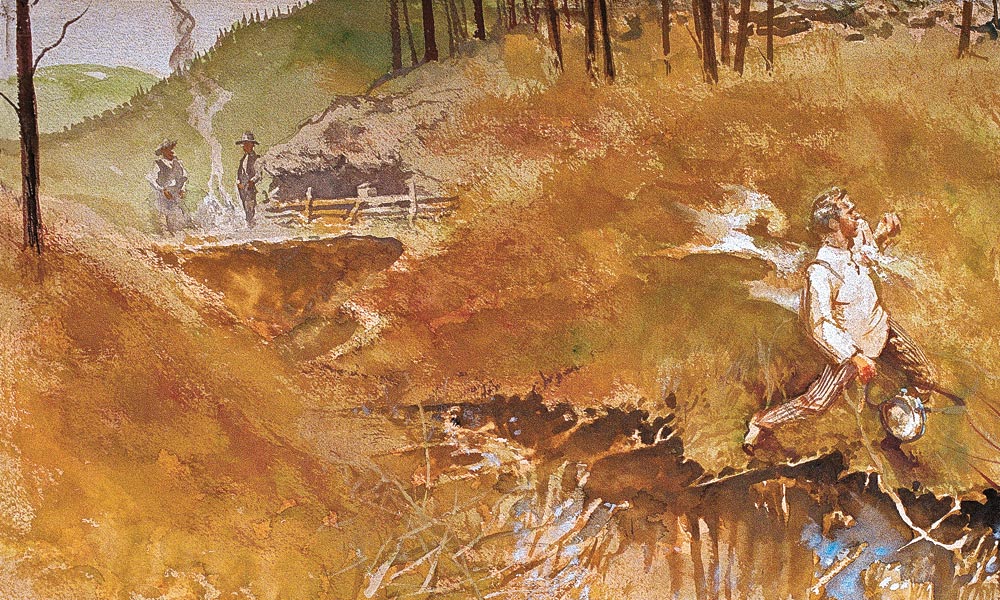
After Farr is shot, Lay again faints.
In the gathering darkness, the posse members still can’t locate Carver, who continues firing at will.
With Reno and the other officers on the far side of the gulch silenced, Carver concentrates on Elliott’s squad, which is spread out on Carver’s left flank. One of Carver’s bullets slams into Love’s thigh, smashing a contaminated knife and driving the poisoned blade deep into Love’s flesh.
At about 6 p.m., Carver fires two final shots. A full hour later, the posse is still hunkered down, paralyzed with fear. A heavy rain begins to fall, and yet, the posse waits for darkness before moving. For the entire time, Smith moans and yells, as the dead body of Farr is still on top of him.
All three outlaws disappear into the wet darkness.
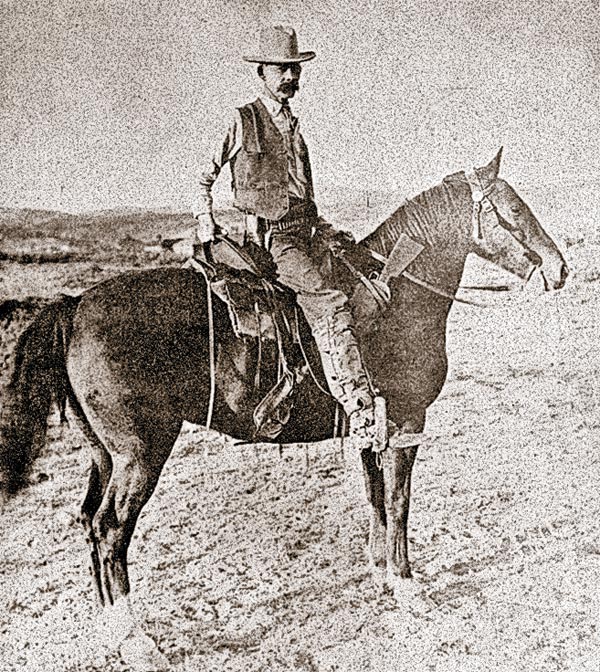
– All photos True West Archives –
Where Was Black Jack?
Tradition maintains Tom “Black Jack” Ketchum, Sam’s younger brother, was kicked out of his own gang over an argument regarding the division of spoils. Less than a month after the Turkey Creek shoot-out (the second Folsom train robbery), Tom single-handedly tried to hold up a train at Robbers Cut. Today, the Turkey Creek Canyon outlaw campsite is still known as Black Jack’s Hide-out.
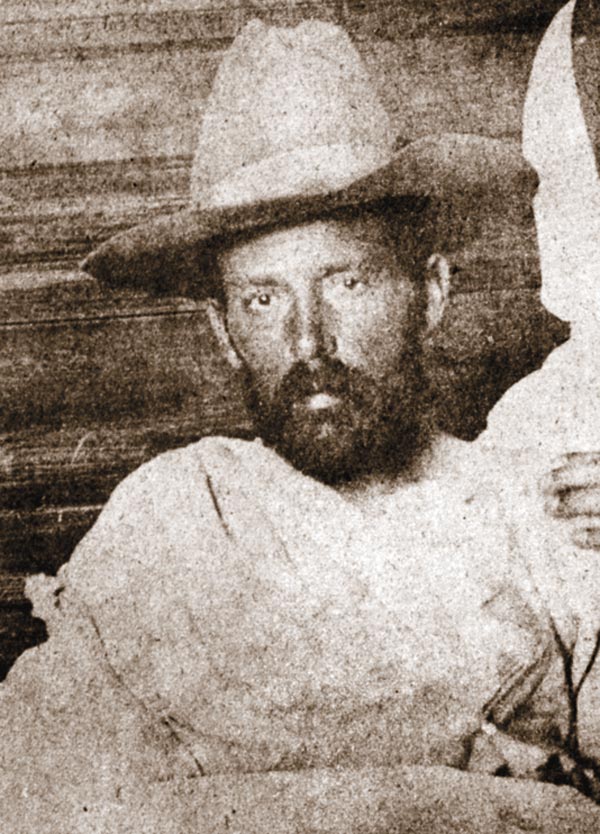
Aftermath: Odds & Ends
When Elzy Lay opened his eyes, he saw Will Carver standing over him. After Carver helped him to his feet, the two located Sam Ketchum, crept to their two horses and quietly made their way up the canyon. As they headed into the mountains, Carver and Lay (who was badly wounded) held Ketchum in the saddle; one may have ridden with Ketchum or walked beside him.
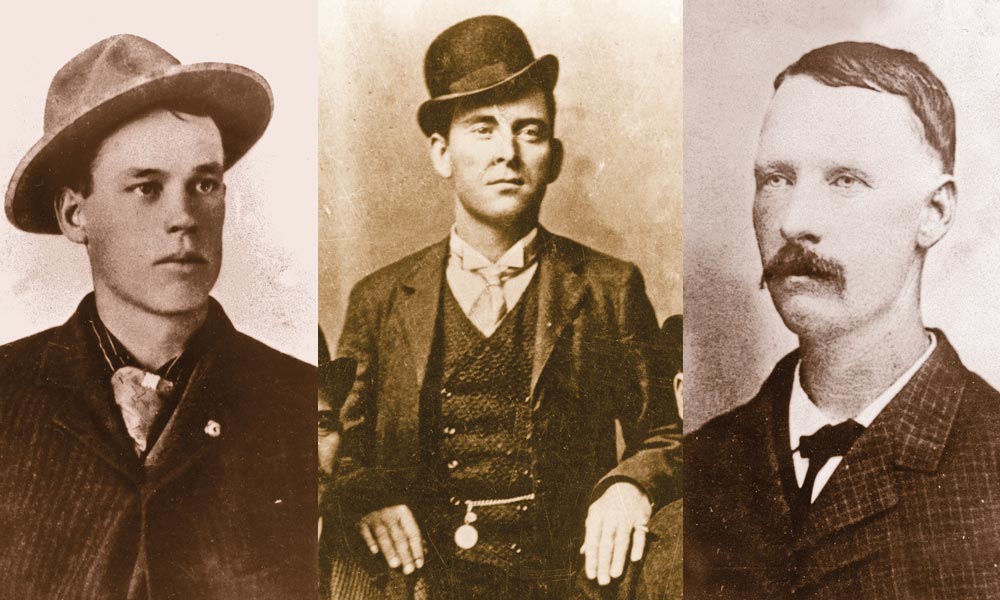
The next day, a relief posse headed by U.S. Marshal Creighton M. Foraker searched the outlaw hide-out in Turkey Creek Canyon and found bedding rolled up in tarps, a bloody hat and slicker, a packsaddle tree, some provisions, frying pans and a large coffeepot. “Bloody splotches” covered the ground, which was littered with empty .30-40 cartridge cases. At the far end of the battleground lay a dead horse with its saddle still on. A Winchester boot and rope were still on the saddle. (Not mentioned at the subsequent trial was a second horse so badly wounded, it had to be killed.) Also found was an empty valise, which had been slashed open and was assumed to have held the train robbery loot. In a box nearby were roughly 40 pounds of dynamite. Scattered about the sniper’s nest, where Carver had done his shooting, were 23 shells.
Ketchum could not stay in the saddle and urged his comrades to leave him. The outlaws left Ketchum at a ranch house near Ute Creek, and he was captured and taken to Santa Fe, New Mexico Territory, where he died of blood poisoning on July 24.
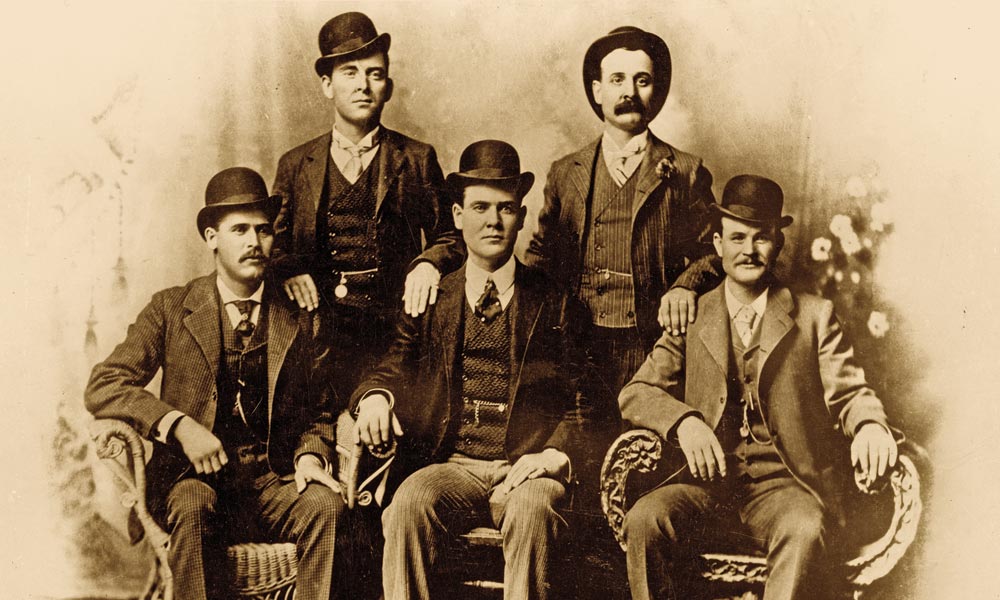
Posse member Henry Love died from his wounds and was buried in Springer. The knife he had been carrying in his pocket was hit by Carver’s bullet, which drove the blade into his thigh. Unfortunately, Love had used the knife to skin diseased cattle that contracted blackleg. By the time doctors saw Love, some 18 hours after he was shot, they could do nothing for him. Because of the severity of Love’s wound, initial reports claimed the outlaws had used exploding bullets, but this turned out to be false.
Of the seven posse members, only Wilson Elliott, James H. Morgan and Perfecto Cordoba escaped unscathed.
Carver and Lay reportedly received medical aid at a ranch near Elizabethtown (or E-Town, as the locals called it). Four weeks after the Turkey Creek fight, Lay was captured at a cow camp 25 miles east of Carlsbad. Tried and sentenced to life in prison, Lay was pardoned in 1906 and lived until 1934. Carver made it safely to Texas and rejoined Butch Cassidy and the Sundance Kid just in time for their famous group photo (see opposite page).
Recommended: Dynamite and Six-Shooter by Jeffrey Burton, published by Palomino Press, and The Deadliest Outlaws: The Ketchum Gang and the Wild Bunch by Jeffrey Burton, published by University of North Texas Press

